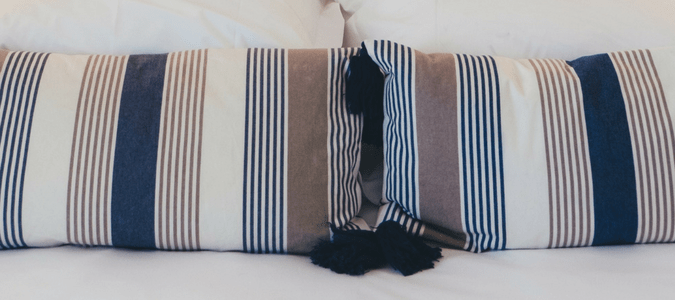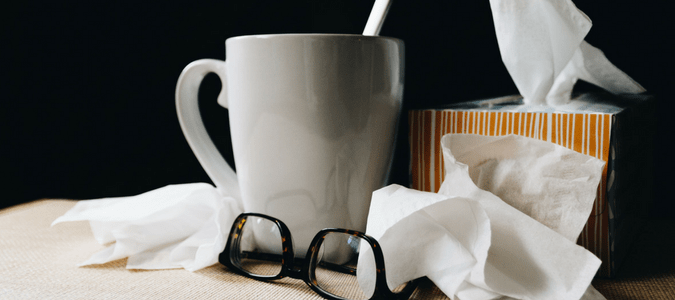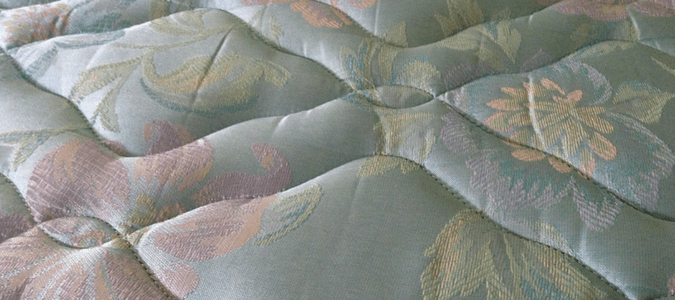
Imagine your bed and pillows being infested with tiny bugs measuring less than half a millimeter in length that feed off the skin cells you slough off in your sleep. Sound like a horror movie? If the thought of such a thing makes your skin crawl, you aren’t alone. Unfortunately, these little creatures aren’t something out of a sci-fi flick. They are dust mites, and dust mites in bed are prevalent and shared in many homes.
It’s natural, of course, to feel a bit horrified by the idea of harboring dust mites in bed, especially if you’re among the many folks who are allergic to these creatures. But barring a dust mite allergy, are dust mites in bed really something you need to worry about? Many people have heard they should regularly replace pillows, linens, and even mattresses to keep dust mites at bay. Perhaps you’ve been scared into frequent purchases of new pillows and sheets as you imagine your bed filling up with teeming colonies of mites that will happily feast on your skin—but how accurate is that terrifying mental image? Are dust mites a real problem, or is the supposed trouble they cause mainly a myth?

Dust Mites In Bed: Symptoms And Signs
Some people are genuinely allergic to dust mites—or, more accurately, to proteins found in these creatures’ feces. Dust mite allergies often cause such mild symptoms that can be difficult to diagnose accurately without proper testing that an allergist conducts. Someone with a dust mite allergy might suffer from repeated and ongoing symptoms and notice their symptoms primarily upon waking up each morning. If you have dust mites in bed, symptoms could include one or more of the following:
- Sinus headaches
- Itchy or watery eyes
- Runny nose
- Sneezing
- Eczema
- Asthma
Dust mite allergy symptoms can be very subtle. If you’re allergic to these creatures, your only symptom might be chronic congestion—which can be due to one or more different allergens, not just dust mites.
However, it’s important to note that dust mite allergies in children can be severe, linked to childhood and adult asthma. If you suspect your child might be allergic to dust mites, ask your pediatrician if testing would be recommended, so you can decide how best to protect your loved ones.

Suspected Bed Mites: Bites May Indicate A Different Problem
We’ve discussed people who suffer from a dust mite allergy, but what about those who aren’t actually allergic to these tiny bugs? Do they also need to take measures to protect their beds or other parts of their homes from infestation?
To answer this question, let’s first consider where dust mites are most and least likely to be encountered. Since dust mites are rare in dry climates, they are less likely problematic in places like Arizona or New Mexico. Instead, they thrive in warm, damp climates, so states like Florida, Georgia, Louisiana, and other humid areas, including Houston, are more likely to provide dust mites with far more hospitable homes.
Of course, beds in any climate tend to be warm and slightly damp, especially in the summertime. Our bodies naturally release heat, sweat, and oils as we sleep and shed skin cells at night. These conditions are perfect for dust mites, making our beds, pillows, carpet, and upholstered furniture appealing nesting spots for these creatures. These microscopic creatures feast on our skin cells and suck the moisture right out of the air, and they can live out their entire life cycle in our beds.
If you aren’t allergic, dust mites are basically harmless. However, dust mite allergies are among the most common irritants in our homes. While their feeding habits may sound rather disgusting, dust mites don’t bite humans or carry diseases and generally don’t cause us any real trouble. In fact, since dust mites are so tiny, most of us don’t even notice their presence. You can’t accurately identify a dust mite without magnifying it at least ten times. Bed bugs, in contrast, are much more giant than dust mites. Adult bed bugs are about the size and color of an apple seed and cause far more significant problems if they infest your home.
Since many people confuse dust mites with bed bugs, it’s worth exploring the similarities and differences between these two species.

Dust Mites Vs. Bed Bugs
Like dust mites, bed bugs can also infest mattresses, other items of furniture, and other areas of the home—but that’s about the extent of the similarities between these two species.
As far as their differences, there are many. First, bed bugs are true, six-legged “bugs,” while dust mites are actually eight-legged arachnids or tiny spiders. While dust mites feed off dead skin cells shed naturally by a human or other animal, bed bugs live off the fresh blood of warm-blooded mammals. This is why these bugs must bite their hosts to access that fresh, warm blood supply. This means that if you wake up one morning covered in red, itchy bites, it’s not from dust mites. Bed bugs might well be the culprit.
There are also differences in the most effective methods of removing dust mites vs. bed bugs. Between these two undesirable creatures, getting rid of bed bugs can be far more complex. For one thing, bed bugs can survive the spin cycle of your washing machine, especially if you wash your bedding with cold water instead of hot. Although bed bugs can’t live in your hair, since they’re flat enough to slip between floorboards or the baseboard and the wall, they are also tough to vacuum up effectively. Vacuuming and steam-cleaning carpets, however, can be beneficial in eliminating dust mites. Finally, you can’t get rid of bed bugs simply by leaving an infested couch or mattress out in the sun, but this can be an excellent way to eliminate dust mites, as the sun’s gentle heat will kill them off.

How To Get Rid Of Dust Mites In Mattress Or Pillows
If you have a true dust mite allergy—or if someone in your family is allergic—you may consider replacing all bedding, pillows, and mattresses. That’s too expensive, too much trouble, and simply unnecessary. Instead, if you suffer from dust mite allergies, investing in unique, washable covers for pillows and mattresses that are allergen-proof is a good idea. Some of these come in the form of a zippered case that completely encases the mattress or pillow, protecting it fully from dust mites and bed bugs, liquid spills, pet stains, and anything else that might damage the mattress.
One more tip for people with old-fashioned, two-sided mattresses: You can kill off dust mites simply by flipping your mattress once a month (or more often). Flipping the mattress effectively moves live dust mites away from their food and water source, which will kill them in time.
It’s also a brilliant idea to wash pillows and linens frequently in the hottest water available and dry them on the dryer’s high-heat setting. Weekly washings can be very helpful in reducing exposure to dust mites and keeping their numbers at bay. Since extreme cold kills off dust mites and extreme heat, pillows, and sheets can also be placed in the freezer for a full day to kill off the mites.
Regardless of the weather outdoors, you can make your home’s indoor climate less hospitable to dust mites. Using your air-conditioner and a dehumidifier will reduce the warmth and moisture in your room and bed that dust mites love. You should also vacuum the carpeting and upholstered furniture every week to eliminate any dust mites that might be living in those areas. Using a vacuum equipped with a HEPA filter can be very effective in helping to eliminate dust mites.
Removing all carpeting in your home may be a good idea if you are very allergic to dust mites since the little bugs can’t survive long on hard flooring. If you go this route, you might want to purchase smaller, washable area rugs to provide comfort and dampen sound in your home.
Call On ABC To Help Solve Your Pest Problems
Even the cleanest, most diligent, hygienic homeowner can have trouble managing a dust mite infestation. If your dust mite problem proves too big for you to handle on your own, call on ABC Home & Commercial to help. ABC is a leader in pest control, and our experts will work with you to develop a plan for reducing dust mites in your home. If it turns out you’re actually dealing with bed bugs or some other type of creature besides dust mites, we’ll make an accurate diagnosis of what pest is causing you problems, determine the best plan for elimination, and take care of the problem for you.